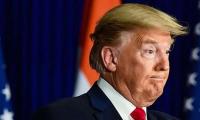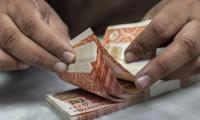TOKYO/WELLINGTON: Negative interest rate policy - an unconventional gambit once only considered by economies with chronically low inflation such as Europe and Japan - is becoming a more attractive option for some other central banks to counter unwelcome currency rises, Reuters reported.
In Asia, central banks in economies as diverse as Australia, India and Thailand have stunned markets by cutting aggressively rates in response to the broadening fallout from the US-China trade war.
The Reserve Bank of New Zealand (RBNZ) - considered a pioneer in central bank policymaking circles since it adopted inflation-targeting nearly three decades ago - floated the possibility of negative rates last week as it, too, slashed rates by a bigger-than-expected 50 basis points and sent its currency tumbling to 3-1/2-year lows.
The fact such controversial tools are being more widely contemplated underscores the dilemma central banks across the world face, as the global slowdown forces them to go to extremes in shielding their economies from a strengthening currency.
The Sino-American tariff war has hurt global supply chains and manufacturing activity, slowing growth in export-reliant Asian economies and prodding some central banks to cut rates in the hope of giving exports a boost via a weaker currency.
That, in turn, has stoked fears of a cycle of competitive devaluations and prompted some policymakers to think about more radical tools.
“The RBNZ are clearly hitting things on the front foot. We are globally in a central bank easing cycle,” said Stuart Ive, a Wellington-based currency and bond dealer at OM Financial.
“It’s not that the RBNZ’s on their own here. Everyone else is looking at exactly the same thing.”
But a closer look at Europe and Japan – where negative rates are in place – shows the performance has been mixed at best.
Until recently, adopting such unconventional policy measures had been a remote idea for most central banks in fast-growing Asia, where generally higher rates gave ample room for cuts during a downturn.
Indeed, before the Federal Reserve’s shift late last year to a dovish monetary policy stance, even cutting rates too quickly was considered risky as it could trigger a massive capital outflow.
But trade tensions and volatile markets are forcing some Asian economies, particularly those reliant on trade, to look at ways to keep a spike in their currencies from hurting exports.
A negative rate policy appears a useful tool to this end, as it helps widen the interest-rate gap with the
United States and so keep their currencies from appreciating against the
dollar.
This handout photo released by the Iraqi prime minister´s office on April 1, 2023, shows a view of installations at...
P@SHA Chairman Zohaib Khan was the esteemed Chief Guest at Aptech 2023. — X/PASHAORGKARACHI: Muhammad Zohaib Khan,...
PSX marked the listing of the Mahaana Islamic Index Exchange Traded Fund with a gong ceremony on aPRIL 23, 2024. —...
FPCCI Regional Chairman and VP Zaki Aijaz while speaking during a round table discussion on the challenges and...
This representational image shows Gold bars. — AFP/FileKARACHI: Gold prices in the local market fell by Rs7,800 per...
Security personnel walk past the US Federal Reserve building in Washington, DC on Oct 22, 2021. — AFPNew York:...







